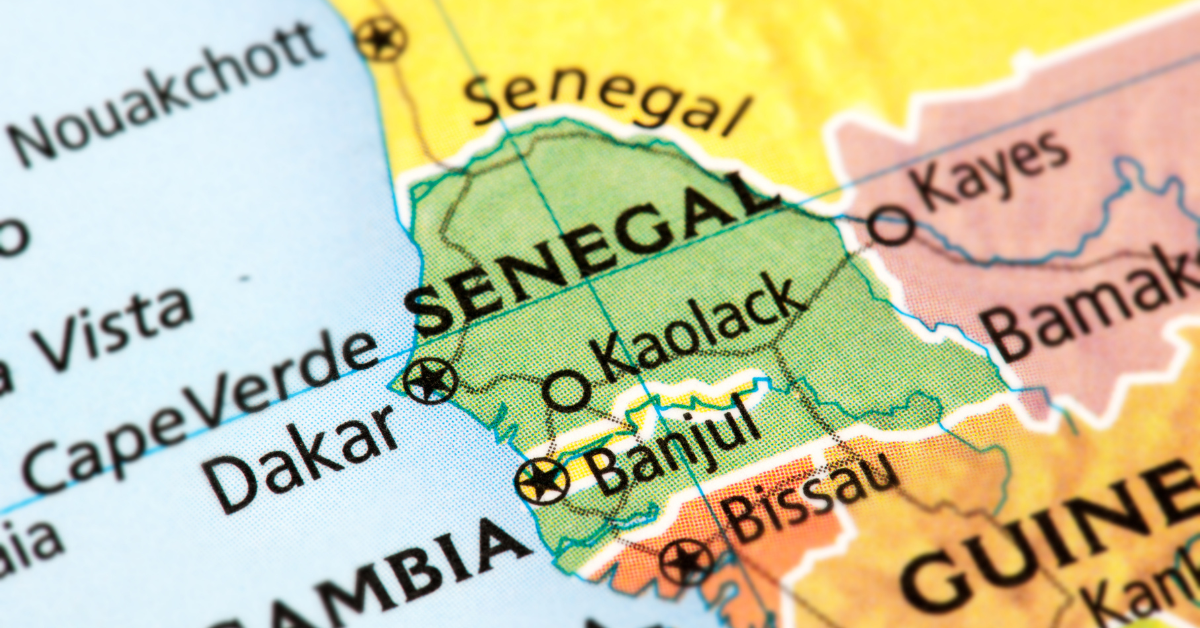In Japanese, Senegal can be written in Kanji as “塞内加爾.” This is an example of ateji (phonetic Kanji use), where sound is prioritized over meaning. While the modern spelling is always in Katakana, this Kanji version remains an important clue to understanding the link between Japanese and Kanji culture.
The Origin of the Kanji Spelling “塞内加爾”
The phrase 「塞内加爾」 is a phonetic rendering of “Senegal” into Kanji. It was created by selecting characters based on their sound rather than meaning.
- 塞 → read as “Se” or “Sai”
- 内 → read as “Ne” or “Nai”
- 加 → read as “Ga” or “Ka”
- 爾 → read as “Ru,” “Ni,” or “Ji”
By combining these readings, the pronunciation “Se-ne-ga-ru” was approximated.
The Original Meanings of the Kanji
Although chosen for their sounds, each Kanji has its own meaning. When explaining this to foreigners, it helps to emphasize the difference between sound-based selection and the literal meaning.
| Kanji | Reading | Original Meaning | Relation to Senegal |
|---|---|---|---|
| 塞 | sai / sei | to block, frontier | Used only for sound, unrelated to Senegal |
| 内 | nai / uchi | inside, inner part | Sound-based only, no semantic link |
| 加 | ka / kuwaeru | to add, to increase | Chosen for phonetic similarity |
| 爾 | ni / ji / a | you, that (archaic) | Borrowed for sound, no meaning connection |
The Historical Background of Ateji
The practice of using Kanji to represent foreign names was common not only in Japan but also in China. Japan adopted this method to express foreign terms in writing. These spellings prioritized phonetics over meaning.
| Country | Kanji Ateji | Modern Spelling |
|---|---|---|
| Portugal | 葡萄牙 | ポルトガル (Portugal) |
| America | 亜米利加 | アメリカ (America) |
| France | 仏蘭西 | フランス (France) |
| England | 英吉利 | イギリス (England) |
| Senegal | 塞内加爾 | セネガル (Senegal) |
Such ateji were useful before Katakana became the norm. After World War II, Katakana was adopted to standardize international spelling, leading to the decline of Kanji forms.
How to Explain to Foreigners
When explaining “塞内加爾” to foreigners, three main points should be emphasized:
| Key Point | Explanation |
|---|---|
| Sound over meaning | The Kanji were chosen only to reproduce “Senegal’s” sound |
| Chinese influence | Many ateji came from Chinese transliterations later used in Japanese |
| No longer used today | Modern Japanese always uses Katakana “セネガル” |
The Difference Between Kanji and Katakana Spellings
The contrast between Katakana and Kanji makes the reasoning clearer for foreign learners.
| Writing System | Feature | Modern Usage |
|---|---|---|
| Katakana (セネガル) | Internationally consistent, easy to recognize | Used in news, textbooks, and daily life |
| Kanji (塞内加爾) | Found in older documents, meaning unrelated | Rarely used, mainly in dictionaries |
| Mixed use | Katakana + Kanji during Meiji–early Showa | Seen only in historical references |
Modern Use of the Kanji Spelling
Today, “塞内加爾” is no longer in use in everyday Japanese. The Katakana spelling is universal. However, the Kanji form remains in dictionaries and historical sources, serving as a valuable example of the flexibility of Japanese and Kanji culture.
For foreign learners, this highlights how Japanese once adapted foreign words before adopting the current Katakana system. It shows both the linguistic adaptability and the historical evolution of written Japanese.
Conclusion
Senegal’s Kanji spelling 「塞内加爾」 is an example of ateji, where sound reproduction is prioritized over meaning. The Kanji meanings themselves are unrelated to Senegal’s history or culture. In modern Japanese, Katakana is used exclusively, but the Kanji spelling remains a fascinating window into the past.
When explaining this to foreigners, it is helpful to highlight three points:
- It is a phonetic spelling, not a semantic one
- It was influenced by Chinese transliterations
- Today, Katakana is the standard






